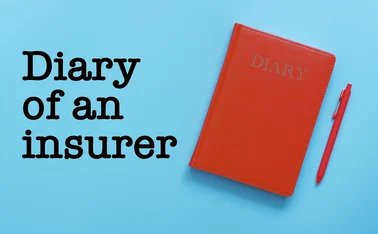
Post Europe: Sustaining work-related road safety in hard times

Research shows 16% of hospitalisation crashes and 24% of fatal crashes involve someone driving for work. Dr Will Murray puts forward the legal and financial case for European organisations implementing a collision free culture.
In the current climate of government cost cutting, downturn, recession, rationalisation, downsizing, and the limited availability of capital, maintaining safety in a cost effective way - or loss prevention - is particularly important in the process of ‘sustaining safety in hard times'.
For this reason, however strong the societal reasons are for reducing vehicle collisions, a reaction to high costs or a major event has been the driving force in most work-related road safety improvement programs. Research suggests that the costs of workplace injuries are shared, 40% by the employee, 30% by the employer and 30% by the community.
Ignoring costs
Despite this most organisations underestimate, or choose to ignore, the ‘real costs' of their collisions by at least half. In some organisations the lack of action is due to safety, health and environmental managers believing that fleet managers are responsible for road safety and vice versa, leading to no action being taken at all. In other cases, the fact that road safety is not included in many of the formal qualifications undertaken by fleet and SHE specialists has led to a lack of awareness of road safety and the measures that can be implemented to help control or reduce risk.
In reality, at present there is still only limited data on the true extent of the work driver effect on road safety because few jurisdictions around the world maintain any ‘purpose of journey information' in relation to road crashes. The best data currently available is for Queensland in Australia, where at least 16% of hospitalisation crashes and 24% of fatal crashes involve someone driving for work.
"Despite this most organisations underestimate, or choose to ignore, the ‘real costs'"
Company claims
Transport Research Laboratory surveys suggest that company car drivers have about 50% more accidents than ordinary drivers, even after allowing for their higher mileages. While insurance data shows that between 20-65% of company cars are involved in an accident each year. This equates to more than a million fleet vehicle insurance claims in the UK costing almost £2bn in claims.
It is estimated that in Europe six out of ten work accidents resulting in death are road crashes, including both crashes while driving for work and commuting crashes, suggesting that driving for and to work are significant risk and cost factors for the insurance and workers compensation sector.
The law
Legally, many jurisdictions around the world have tightened up their Occupational Health and Safety and other regulations to include work-related driving. Globally there is the ISO39001 standard, throughout Europe there are the Certificate of Professional Competence for large vehicle drivers, European Union Framework Directive 89/391/EEC and the Working Time Directive. While in Eastern Europe there is the importance of the Labour Code in engaging organisations.
Germany has workers compensation, social insurance and the Berufsgenossenschaftens, and Sweden has Vision Zero, which is engaging suppliers through building safety into purchasing, interpretation of EU Framework Directive 89/391/EEC and government leadership on vehicle safety features.
"It is estimated that in Europe six out of ten work accidents resulting in death are road crashes."
Bottom line issues
If legislation and safety are not enough to get firms acting on this problem then maybe the cost to their bottom line will. Every truck, van or company car operator experiences a ‘ripple in a pool' or ‘iceberg effect' after a vehicle collision. Fleet collision costs are much higher than just vehicle repairs and include both insured and uninsured - including legal costs - or direct costs such as repairs and indirect costs such as personal injury, medical, rehabilitation, absence from work, workers compensation, downtime/lost productivity, and potential loss of custom, replacement vehicles, administration and insurance hikes costs.
Australian research and insurance data suggests that the total cost of a fleet vehicle insurance claim is between 4-20 times higher the average direct repair costs. While UK Health and Safety Executive research undertaken in the early 1990s identified that that the below the water line iceberg costs can be eight to 36 times greater than those visible above the water.
Quantification arguments
Normally, organisations focus on vehicle repairs and insurance costs. There are, however, many other costs that are more difficult to quantify, but the quantification of these can make the arguments in favour of investing in fleet safety even greater. As a starting point, it is vital to get an understanding of the full costs involved. Costs can be split into recoverable and irrecoverable through insurance.
Once these costs are fully understood and as far as possible quantified, they can then be used to develop countermeasures and set standards and targets for managers, supervisors and drivers. Cost savings made through safety countermeasures go straight to the bottom-line profit margin.
This cost relationship is a powerful argument for investing in fleet safety, and a useful mechanism for focusing the minds of accountants, senior management and local operational managers on the need for proactive collision reduction. In one trucking company calculated that they needed to earn over £5 000 in revenue for each damaged wing mirror they had to replace.
"The quantification of these [costs] can make the arguments in favour of investing in fleet safety even greater."
Cost trade-off
Cost trade-offs need to be evaluated on a case-by-case basis. Typically, the extra costs are the program itself, and management and staff time. Potential cost savings include insurance, collisions, vehicles, drivers, quality and PR and it is possible to project long-term costs and potential returns on investment from adopting a proactive Fleet Safety Policy.
The best way to avoid the threat of spiralling personal injury and other costs is for fleet managers to take a much more proactive approach to safety and risk management. Organisational culture and management/ supervisory and driver skills and attitude are fundamental to this. Managers not taking responsibility, not analysing their claims statistics and not taking appropriate and proactive actions are the main causes of collisions involving fleet vehicles. All too often fleet managers take action after the event, after killing or maiming someone or after a major incident. To help reduce the hidden, particularly personal injury, costs of collisions they should take action to fulfil their duty of care to employees and other members of the public, by creating a collision free culture.
Powerful argument
In summary any cost savings made through safety interventions go straight to the bottom line profit margin of the organisation. This cost relationship is a powerful argument for investing in work-related road safety, and a useful mechanism for focusing the mind of both senior management and local operational managers on the need for proactive collision reduction. Once these costs are fully understood and as far as possible quantified they can then be used to develop a business case and set standards and targets as part of the evaluation process of safety/risk programs.
Overall, there are some strong societal, business, legal and financial arguments in favour of taking proactive steps to improve European fleet or occupational road safety. Many proactive organisations are beginning to manage such risks, some of which have showcased their work through excellent freely available schemes such as: The European Transport Safety Council Preventing Road Accidents and Injuries for the Safety of Employees project; Driving for Better Business ; and The Fleet Safety Benchmarking Project.
Only time will tell if other business and governmental organisations will sit up and take notice of the opportunities.
Dr Will Murray is research director at Interactive Driving Systems, and a visiting fellow at Loughborough University
Only users who have a paid subscription or are part of a corporate subscription are able to print or copy content.
To access these options, along with all other subscription benefits, please contact info@postonline.co.uk or view our subscription options here: http://subscriptions.postonline.co.uk/subscribe
You are currently unable to print this content. Please contact info@postonline.co.uk to find out more.
You are currently unable to copy this content. Please contact info@postonline.co.uk to find out more.
Copyright Infopro Digital Limited. All rights reserved.
As outlined in our terms and conditions, https://www.infopro-digital.com/terms-and-conditions/subscriptions/ (point 2.4), printing is limited to a single copy.
If you would like to purchase additional rights please email info@postonline.co.uk
Copyright Infopro Digital Limited. All rights reserved.
You may share this content using our article tools. As outlined in our terms and conditions, https://www.infopro-digital.com/terms-and-conditions/subscriptions/ (clause 2.4), an Authorised User may only make one copy of the materials for their own personal use. You must also comply with the restrictions in clause 2.5.
If you would like to purchase additional rights please email info@postonline.co.uk








